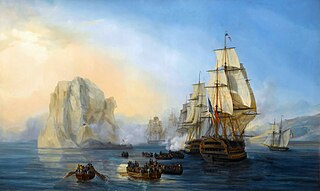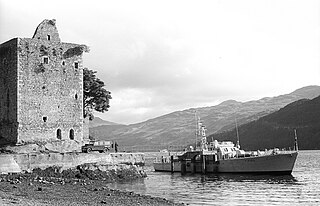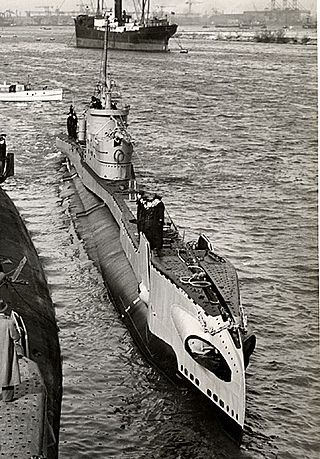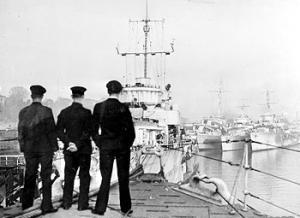
HMS Uva was a Royal Navy rest camp at Diyatalawa, in British Ceylon.

HMS Uva was a Royal Navy rest camp at Diyatalawa, in British Ceylon.
The camp was reportedly built as a prisoner of war camp for use in the Boer War in 1900, and was used as a Royal Naval Auxiliary Hospital in the Second World War. [1] The rest camp was commissioned as an independent command under the name Uva on 1 December 1945. [1]
The camp's accounts were transferred to HMS Lanka in 1957, and the camp was transferred to the Air Ministry on 30 September 1958. [1]
Uva had several nominal depot ships during her career: [1]
| Type | Number | Dates active |
|---|---|---|
| SPL | 431224 | 1 December 1945 – August 1950 |
| Harbour Launch, Petrol | 441614 | August 1950 – ? |
| Harbour Launch, Petrol | 431224 | 1954 |
| Harbour Launch, Diesel | 441614 | 1955 – March 1957 |
| Motor Launch | 4749 | March 1957 – ? |

HMS Black Swan, was the name ship of the Black Swan-class sloops of the Royal Navy. This class was admired for its sea-going qualities.

HMS Loch Killin was a Loch-class frigate of the Royal Navy, named after Loch Killin in Scotland. The ship was laid down at Burntisland Shipbuilding Company's yard in Fife on 2 June 1943, and launched on 29 November 1943. She was one of the first vessels armed with the brand new Squid anti-submarine mortar. Decommissioned in September 1945, the ship was put into Reserve, and finally scrapped on 24 August 1960.

A stone frigate is a naval establishment on land.

The Ford-class seaward defence boats were built for the Royal Navy in the 1950s.

HMS Taurus was a Second World War T-class submarine, built by Vickers Armstrong, Barrow.

Diyatalawa is a former garrison town in the central highlands of Sri Lanka, in the Badulla District of Uva Province. It is situated at an altitude of 1,281 m (4,203 ft) and has become a popular destination for local holiday makers. It is home to the Diyatalawa Garrison of the Sri Lanka Army, which includes the Sri Lanka Military Academy, officer training centre of the army; SLAF Diyatalawa, the Sri Lanka Air Force's ground combat training centre; and facilities of the Sri Lanka Police.

HMS President is a "stone frigate", or shore establishment of the Royal Naval Reserve, based on the northern bank of the River Thames near Tower Bridge in Wapping and is in the London Borough of Tower Hamlets.
HMS Cricket was the name given to a Royal Navy shore establishment on the River Hamble from 1943 to 1946. This name was previously used by the Insect-class gunboat Cricket (1915) that was scrapped in 1942.

HMS Imperieuse was the name given to a floating training establishment of the Royal Navy during the Second World War.

HMS Ferret was a shore establishment and naval base of the Royal Navy during the Second World War, located in Derry. It was given a ship's name as a stone frigate.

HMS Royal Arthur was a shore establishment of the Royal Navy, initially at Ingoldmells near Skegness, and later at Corsham, Wiltshire. During the Second World War, the former holiday camp at Ingoldmells was used to mainly train 'Hostilities Only' communications branch ratings and officers.

HMS Artifex was a repair ship of the Royal Navy from late in the Second World War and into the Cold War. Launched as the Cunard liner RMS Aurania she was requisitioned on the outbreak of war to serve as an armed merchant cruiser. Damaged by a U-boat while sailing with an Atlantic convoy, she was purchased outright and converted to a floating workshop, spending the rest of her life as a support ship for the navy.

HMS Eridge was a Hunt-class destroyer of the Royal Navy. She was launched in 1940 and served during the Second World War.
The Diyatalawa Garrison is a common name used for collection of military bases of the Sri Lanka Army located in and around the garrison town Diyatalawa in the Uva Province. Sometimes it is referred to as the Diyatalawa Cantonment. It is one of the oldest military garrisons in Sri Lanka. It is home to the several training centers of the army, including the Sri Lanka Military Academy and has a detachment of the Gemunu Watch. The Sri Lanka Army Medical Corps maintains a base hospital in Diyatalawa. SLAF Diyatalawa is situated in close proximity.
HMS Standard was a British Royal Navy shore establishment between 1942 and 1945. Situated well away from the sea near Kielder in Northumberland, the base was an assessment and rehabilitation centre for naval personnel diagnosed with personality disorders.
HMS Daedalus II was a British Royal Navy air station and training establishment between 1940 and 1946. The name applied to four different locations with the United Kingdom at various times during the Second World War. The establishment was formed to free up space at RNAS Lee-on-Solent .
The Cybele class was a class of trimaran ships, constructed by the Royal Navy during World War II for the purpose of clearing minefields. Referred to as Mine Destructor Vessels, two ships of the class, HMS Cybele and HMS Cyrus were built in 1944; one was lost following D-Day, while the other survived the war only to be scrapped shortly thereafter.

HMS Elfin was a torpedo recovery vessel built for the Royal Navy. She was built by J. Samuel White & Company, East Cowes, Isle of Wight, was launched on 20 November 1933 and commissioned on 16 January 1934. She was builder's number 1754. Her home port was the Navy's torpedo trials establishment HMS Vernon, and she was based at Portland. A sistership, Redwing, was constructed under builder's number 1753 and was stationed at HMS Defiance, Devonport. Elfin was renamed Nettle during the Second World War, and was later sold for scrapping. She survived in mercantile service, and has been preserved.

HMS Crispin was a C-class destroyer of the Royal Navy built by J. Samuel White, Cowes between 1944 and 1946. She was originally to have been named HMS Craccher. She was sold to the Pakistan Navy in 1958 and renamed PNS Jahangir. She was scrapped in 1982.

HMS Eggesford was a Type III Hunt-class destroyer of the Royal Navy. She entered service in January 1943, carrying out convoy escort, patrol and anti-shipping attacks for most of the rest of the Second World War. In 1957, she was sold to the West German Navy, serving as a training ship for the submarine weapons school until 1968.